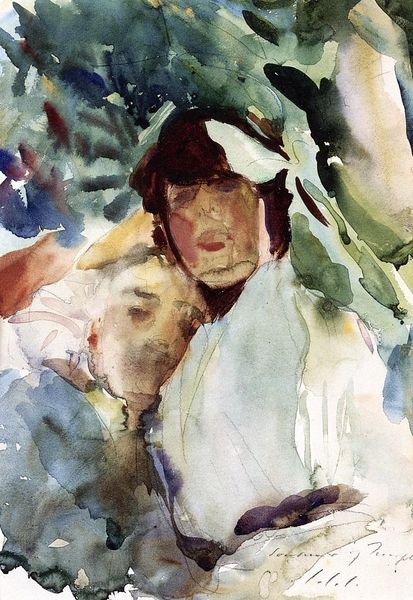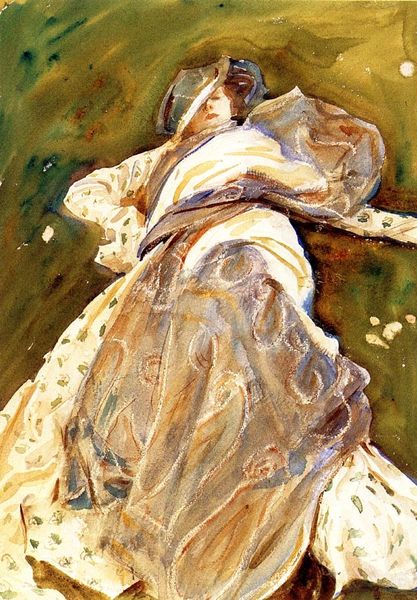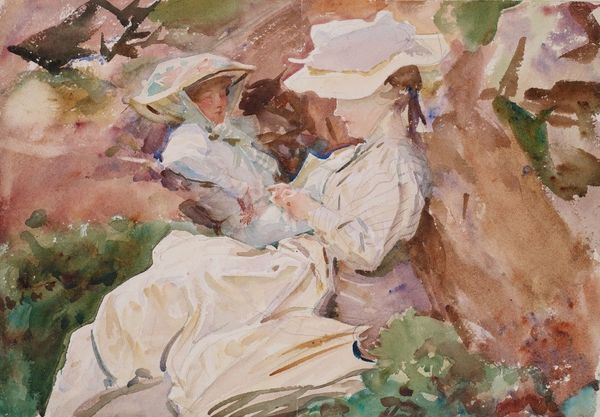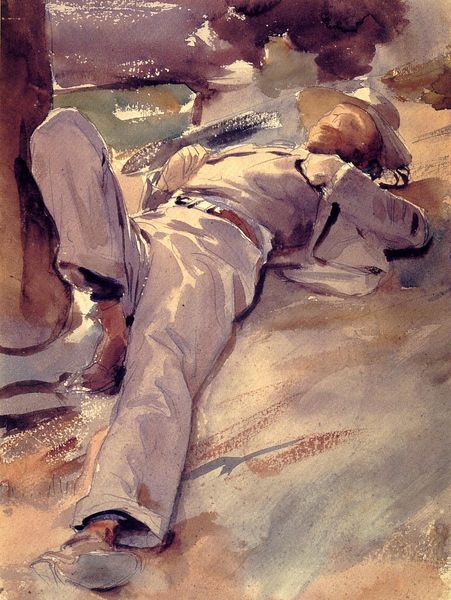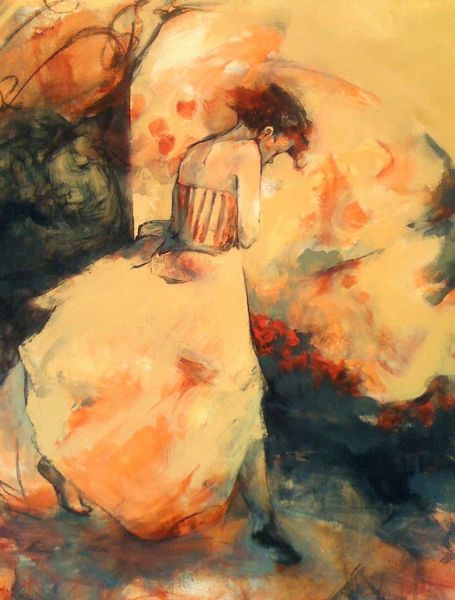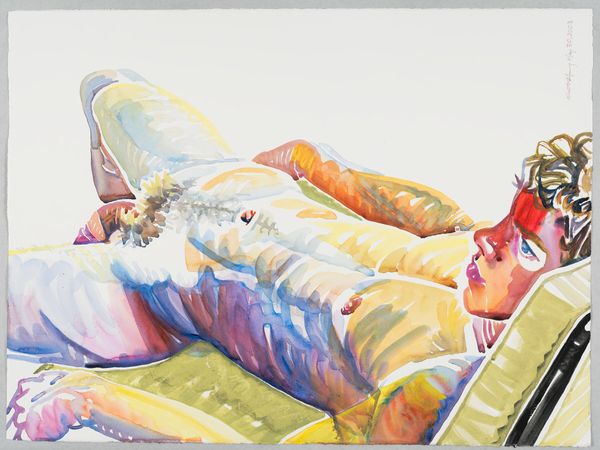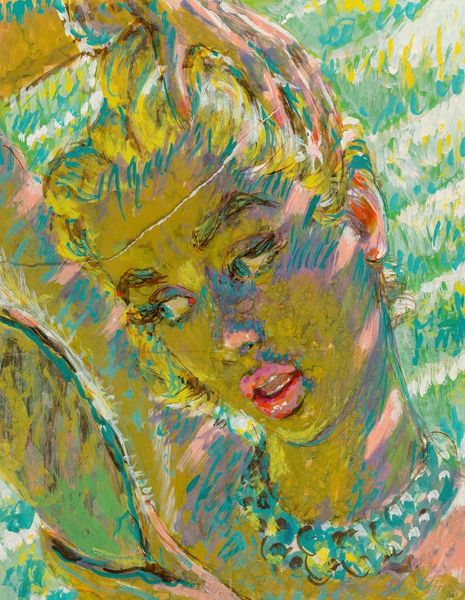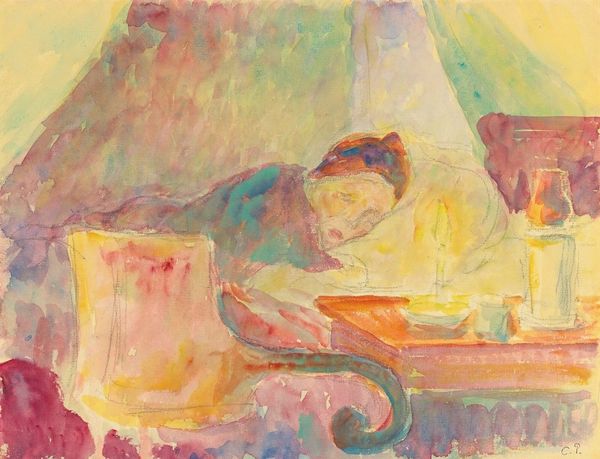
Dimensions: 25.4 x 35.56 cm
Copyright: Public domain
Editor: Here we have John Singer Sargent's "Zuleika," created in 1907 using watercolor. It's such an intimate portrayal, but the brushstrokes feel so loose and almost unfinished. How do you interpret this work? Curator: It's intriguing, isn't it? Beyond the Impressionistic style, which itself challenged academic norms, consider the sitter’s posture. She reclines, almost melting into the landscape, seemingly unbound by societal constraints on women’s comportment at the time. Do you think that's a fair assessment? Editor: Yes, that resonates. There's a passivity to it, perhaps. It could also indicate a newfound freedom for women? Curator: Precisely! It challenges the objectification inherent in the male gaze and empowers the sitter by representing a comfortable space. Sargent presents Zuleika as occupying space on her own terms, challenging the performative constraints women faced at that time. In short, she becomes her own artist! Editor: So, even the act of reclining could be read as a radical statement? Curator: Absolutely. When you view this in the context of the early 20th century and evolving concepts of gender and freedom, this artwork gains even greater power, does it not? Editor: Definitely. I was so focused on the style, I completely missed that. Thanks for reframing the perspective and opening my eyes! Curator: My pleasure. Art reveals its truest power through the intersections of brushstroke, history, and identity. It is truly revealing!
Comments
No comments
Be the first to comment and join the conversation on the ultimate creative platform.
